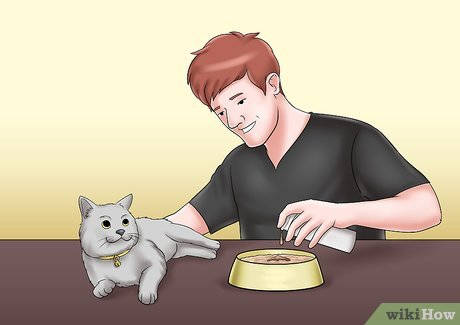Pros: Continuous consumption of the food maintains the pet's normal Ph level of urine, and concrements are prevented.
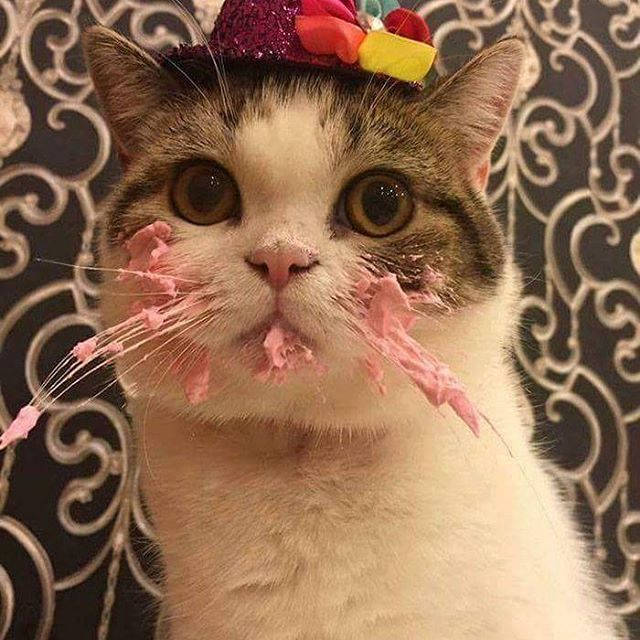
- Feeding cats with kidney failure
- Water
- Protein
- Natural nutrition for renal failure
- Natural foods for urolithiasis
- Special foods
- Farmina Vet Life Cat Struvite Management
- Brit Veterinary Diet Cat Grain free Struvite
- Eukanuba Veterinary Diets Urinary Oxalate
- Features of dietary intake
- What to give the cat?
- Natural food.
- Dry and wet food
- Popular manufacturers
- What to feed a cat with kidney failure: choosing the right diet
- Specialty foods: yes or no?
- The 18 best foods for cats with CPN
- Dry food
- How to recognize chronic kidney disease in a pet
- CKD: Our Treatment Regimen
- The best foods for cats with kidney disease
- Eukanuba Renal
- Royal Canin Renal RF23
- Hill's Prescription Diet K/D Feline Renal Health
- Feeding a cat with kidney disease with natural foods
- How to care for a cat with kidney failure
- Changing the cat's diet
Feeding cats with kidney failure
Owners of cats with kidney failure know that sick pets need to limit the amount of phosphorus in their food. Some are worried that meat contains too much of it and that such a diet will lead to an overabundance of phosphorus. To reassure you, a natural diet is good for cats with kidney problems.
For cats with kidney disease, it is important to follow a special diet. The key aspects of such a diet are water, the right percentage of animal protein and low phosphates.
Water
In chronic kidney disease (CKD), their ability to retain water and concentrate urine is reduced. Therefore, sick cats are at risk of suffering from dehydration. To avoid this, cats need to get enough fluids.
In nature, cats get most of their fluid from food. Animals with chronic kidney disease cannot be fed dry food, it has too low a water content (up to 10%). The most appropriate food for cats with kidney disease is natural food based on raw meat.
Protein
The food of cats with kidney failure should include protein that is easily digested. Such protein is included in rabbit and poultry meat. Many of the toxic products that accumulate in the blood in kidney disease are produced by the breakdown of protein. It has been clinically proven that cats with kidney disease are good at digesting the protein found in rabbit, chicken and rabbit meat.
Lack of protein leads to excessive weight loss, which is bad for the overall condition of the cats. Low-protein foods do not make cats interested. When animals are transferred to a raw, high quality protein diet, their appetite improves markedly.
By the way, SUPERPET natural cat food is 100% suitable for cats with kidney failure as well as for the prevention of this disorder. It consists of raw meat and is high in protein, which is easy to digest. There is no salt or other atypical additives for cats. In short, SUPERPET is 100% compliant with veterinary recommendations.
Natural nutrition for renal failure
There are different ways to reduce protein levels. You can't just eliminate protein from cats' diets. It is better to feed them foods that contain quality protein that is easily digested. This kind of protein will not harm the cats' bodies. Protein that is good for cats is found in rabbit, rabbit and poultry meat.
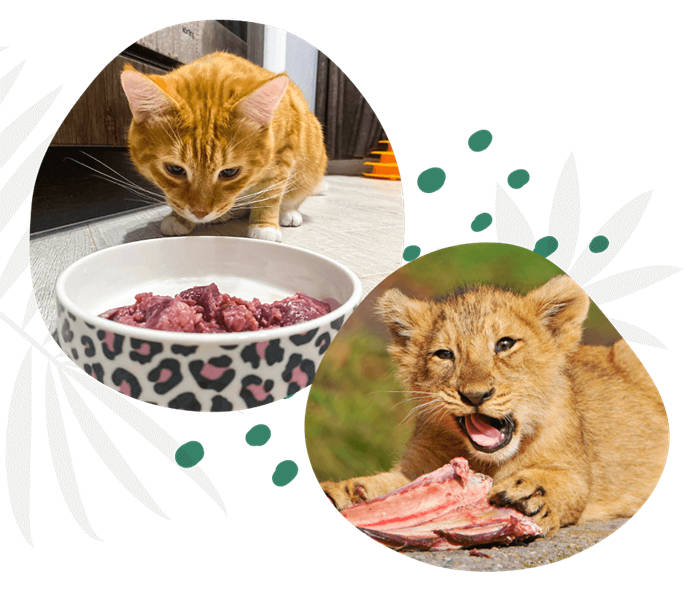
Plant protein is poorly digested in cats. Therefore, you should not feed them food that contains chicken, fish or cornmeal. Flour is used to make dry food and many canned foods.
Eating raw meat does not lead to an overabundance of protein in the cat's body. It is a natural diet for carnivorous animals. No studies have proven that strictly restricting protein in cats' diets prevents complications from kidney disease.
Typically, doctors advise reducing the amount of protein, phosphorus, and salt consumed. New research shows that it is more important to reduce the concentration of phosphorus in the blood of sick animals. This is because cats are obligate carnivores and have a naturally high need for protein. Potassium, B vitamins and omega-3 fatty acids should be added to the diet of cats with unhealthy kidneys.
A natural diet is excellent for cats with kidney failure. Game meat is well digested, contains the right type of protein and lots of natural essential fatty acids. By-products maintain B vitamin levels. Raw meat bones contain less phosphates than cereal feeds.
All these components are contained in SUPERPET natural food. The food is therefore suitable for healthy cats as well as for animals with kidney diseases.
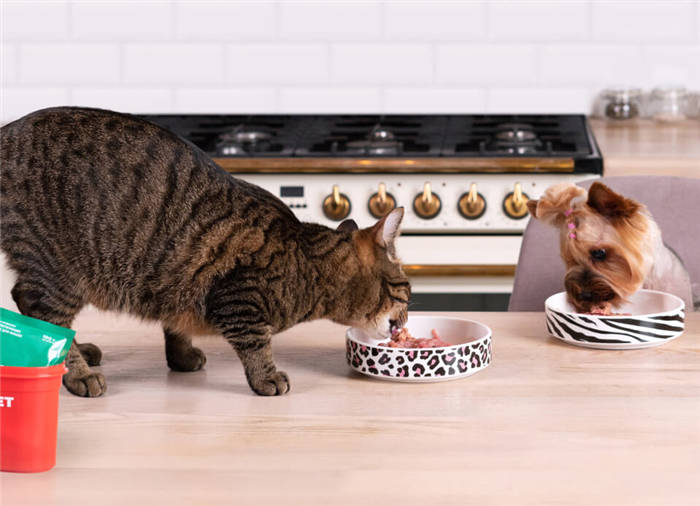
A diet based on raw meat is ideal for any cat because it meets the natural requirements of a true carnivore. Most cats who eat dry food are chronically dehydrated. Therefore, older animals are prone to kidney failure. For these animals, switching to a natural diet that contains the right type of protein and enough fluids can be a real lifesaver.
Natural foods for urolithiasis
The menu of a cat with urolithiasis is drawn up with special care. The main recommendations are given by the veterinarian depending on the type of stones, the severity of IBC, concomitant health problems, the age of the pet.
The table contains general information about foods that are prohibited in cat urolithiasis.
| Product | Reason |
| Fish | Rich in phosphorus and causes deposition of phosphorus in the form of salts. Leads to formation of struvite-type stones. |
| Milk, fermented dairy products | Rich in magnesium and calcium. An excess of these minerals leads to the formation of struvites and oxalates. |
| Hercules | Rich in magnesium, phosphorus, of which stones are formed. When consumed in excess, it disrupts carbohydrate metabolism and interferes with liver function. |
| Fatty meats (pork, lamb, duck, goose). | High fat content in the diet increases the density of the urine. Excessive "heavy" food negatively affects the pet's gastrointestinal function. |
| Smoked meats, canned meats, sausages and sprats. | Contain large amounts of salt and spices. Harmful to the health even of healthy animals. |
| Foods high in oxalic acid (pasta, white bread, potatoes, white cabbage, spinach) | Excessive consumption leads to "acidification" of the urine and the formation of oxalate concrements. |
Do not feed your pet raw vegetables or meat. All foods are boiled or steamed. It is important to observe the drinking regime, the pet should drink plenty of clean water.
| The product | Reasons |
| Lean meat (beef, veal) | Contains the necessary amount of protein, the minimum fat content does not lead to increased urine density. |
| Vegetables: carrots, beets, cauliflower, beans, zucchini | Saturate the body with fiber, do not contain high amounts of oxalic acid. |
| Rice, wheat | Contains enough "slow" carbohydrates, do not contain a high percentage of phosphorus, magnesium. |
Special foods
For the treatment and nutrition of cats with urolithiasis, special therapeutic foods are produced. They are produced by brands of different price segment from economy class to holistic. But for animals with cystic fibrosis, products of the super-premium or holistic classes are suitable.
Economy segment foods labeled "neutered cats", "cystic fibrosis prevention" are made of low-quality ingredients. Their formula is not balanced, and the harm to the health of even an unhealthy animal is great.
When feeding cats with dry food, it is necessary to strictly observe the daily rate. Its excess leads to overeating, obesity. Overweight and sedentary lifestyle is one of the causes of IBC and cats.
Farmina Vet Life Cat Struvite Management
- Protein – 33%.
- Lipids – 16,5%.
- Mineral, vitamin supplements (crude ash) – 6,6%
- Fiber – 1,2%
- Phosphorus – 0,7%
- Magnesium – 0, 06%.
- Chlorides – 0.95%.
- Omega-3 fatty acids – 0.40%.
- Omega-6 fatty acids – 3.20%.
Ingredients: corn gluten, rice, freeze-dried chicken meat, oats, animal fats. DL-methionine and ammonium chloride maintain the necessary Ph of pet urine, prevent the formation of new concrements.
Pros: Contains glucosaminoglycans to protect bladder mucosa from infections.
Brit Veterinary Diet Cat Grain free Struvite
Ingredients: dehydrated chicken meat, yellow pea protein, chicken protein, buckwheat, green peas.
Pros: Dissolves struvite concrements, prevents new formations. Does not contain grains, does not cause allergies. Suitable for feeding animals with urinary tract infections.
Eukanuba Veterinary Diets Urinary Oxalate
Ingredients: crushed corn kernels, chicken meat, chicken meal, chicken liver, fish meal, dried egg, beet pulp, potassium citrate.
Pros: Dissolves oxalate-type stones, prevents new ones from forming.
Features of dietary intake
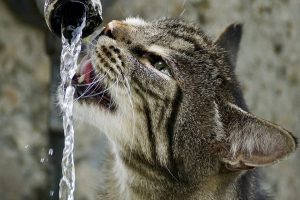
If the owner has chosen to give therapeutic cat food for cats with kidney failure, it is required to calculate the food, taking into account the weight of the animal. Food should be given in portions and in small amounts. At the same time, it is required to feed the cat food or food with reduced phosphorus and calcium content. It is equally important to give the cat free access to drinking water. It also happens that the cat when sick refuses to eat, which is associated with bouts of nausea and vomiting. In this case, it is possible to feed sick animals with baby formula for a few days, using a syringe.
What to give the cat?
Natural food.
When cats have diseased kidneys, it is worth following a dietary diet. Such a measure is strictly adhered to to prevent the exacerbation of kidney failure. In the daily diet of the pet is required to minimize the content of protein, phosphorus and calcium, because of the high probability of formation of stones in the urinary system. But you should not completely abandon such substances, which can lead to additional problems with bone tissue. Since a large amount of calcium is contained in dairy products, which are forbidden in cats with renal failure, these products are replaced by sesame seed. The product is crushed and added in a small amount to natural food.
If the cat is faced with kidney problems, it is strictly forbidden to consume vitamin A, so the daily diet should not contain:
- fish oil;
- fish and animal liver;
- chicken eggs;
- cheese;
- butter;
- cottage cheese with a high percentage of fat.
Cats with kidney disease need to reduce the intake of carbohydrates. It is not recommended to give porridges and croutons, and it is worth increasing the amount of vegetables in the daily diet. It is best to serve ground vegetable puree, seasoned with chicken broth. If renal failure in cats worsens, meat is completely excluded.
Under the ban marine and any other fish, which contain a lot of phosphorus.
Dry and wet food
Popular manufacturers
The best diet for impaired kidney function will be selected by a doctor based on the results of examinations and the condition of the pet. Foods for aging cats with kidney failure come in wet and dry. It is wrong to believe that such a diet has a negative impact on the health of the sick cat. In the case of the disease, it is important to give specialized dry food designed specifically for members of the feline family with impaired kidney function. Such brands are popular:
What to feed a cat with kidney failure: choosing the right diet
Kidney disease, unfortunately, is not uncommon in domestic cats. In some cases, a complex of such pathologies is diagnosed as "kidney failure". This diagnosis is very, very serious, because if no measures are taken, your pet will not last long. A huge role in therapy here is played by proper nutrition, which can seriously improve the overall condition of the cat and prolong its life even in the last stages of the disease. From this article you will learn what to feed a cat with kidney failure.
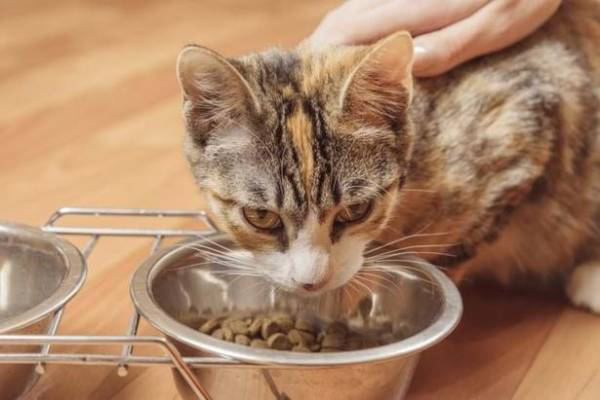
Specialty foods: yes or no?
Almost all specialized resources can be found opinions on the advisability of feeding sick cats exclusively specialized food from the world's leading manufacturers. Is it really so? In principle, therapeutic cat food for cats with kidney failure can indeed be extremely useful, but there are a couple of nuances. The point is that the food must be perfectly suited to your cat in terms of his age, weight, physiological condition. In all other cases, such feeding will only bring your pet harm, because with renal failure it is very important to maintain a balance between the different nutrients, proteins and carbohydrates, which with unsuitable food is impossible.
First of all, with this question you will have to consult a veterinarian, because only an experienced specialist can choose a competent and truly suitable diet. One should remember that if the kidneys are not functioning properly, special attention should be paid to the quantity and quality of protein in the cat's system. It is easier with dogs, because they need amino acids (especially in old age) in somewhat less quantity, while cats are pronounced carnivores. So a sick cat is shown: raw chicken, beef, but in quantities much smaller than you gave before the disease. It is possible to give good by-products. All dry foods, if you used them before, must be excluded from the diet! Renal" proved to be good, and the cost of this option comes out a little cheaper than "natural food" (although still not too cheap).
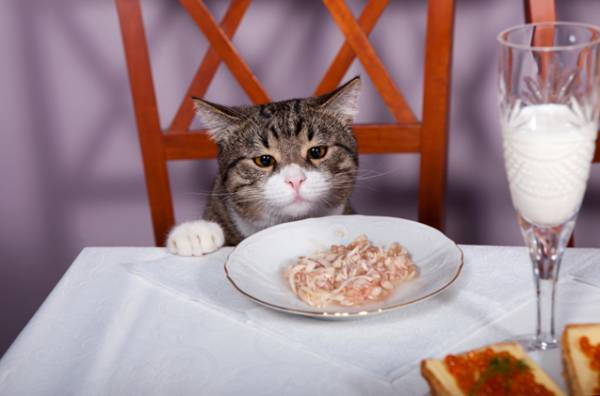
Remember right away that cat food for cats with kidney failure is not cheap, so you should budget for the cost of the food in advance.
The second problem is calcium and phosphorus. Both of these substances are vital, but they are not so simple either. First, phosphorus. British vets (Peter J. Markwell BSc, BVetMed, MRCVS) found not so long ago that reducing the amount of this substance in the diet helps significantly slow the development of kidney failure. But there is still a level below which bone and dental problems can occur: only a biochemical blood test and a consultation with an experienced veterinarian will help here. The situation with calcium is a little different. Normally, it can come from dairy products, but they are contraindicated in CKD, as the digestive tract simply can not cope with such food. Help can be ground sesame seeds (of course, not in baked goods). Keep in mind that vitamin A is contraindicated in problems with the kidneys, so you should also take care of this. For example, you shouldn't give your cat cod liver oil or any other food rich in it.
The 18 best foods for cats with CPN
Anastasia Ignatyeva Author and editor of the project ZooTop.info "I love animals, especially my cat Josie. Together with you, based on the opinion of experts, we will figure out what products are best to choose for our pets."
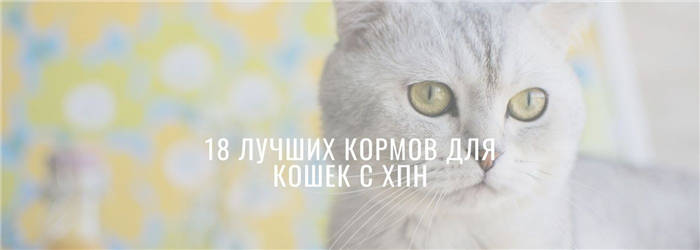
In chronic renal failure (CKD), the organs of the excretory system do not cope well with the removal of products of metabolic decay, toxins accumulate in the body. Untreated, complications such as uremic crisis and acidosis are possible. To stay healthy, a cat needs diets low in phosphorus, sodium, and protein. We have compiled a rating of therapeutic foods for pets with CKD, the positions are determined taking into account the composition, price, customer reviews.
We have selected for you the best product in our ranking according to our experts. In 99% of cases, it is the best choice according to this rating.
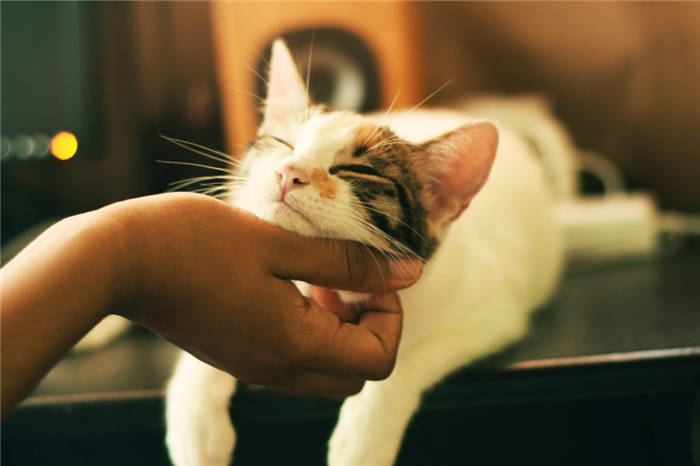
Dry food
For the treatment of CKD, the animal is shown premium and super-premium class diets, the formulation should be free of preservatives, dyes, GMOs. Renal failure is often accompanied by digestive disorders, so it is recommended to choose foods with prebiotics and fiber. If the cat is allergic to cereals, grain-free diets are prescribed.
This is the best product in our rating, the diet is indicated for kidney and heart failure. The product contains low amounts of phosphorus, protein, sodium – reducing nitrogen metabolism, slowing the progression of CKD. Composition peculiarities:
- The largest percentage is taken up by grains – rice and corn;
- Protein sources – meat, eggs, fish in dehydrated form;
- Ingredients for gastrointestinal health: prebiotics MOS and FOS, inulin;
- The amino acids lysine, carnitine, tryptophan;
- Vitamins A, D, C, B;
- Minerals in chelated form – zinc, manganese, iron, copper;
- Tocopherols – antioxidants that prevent oxidation of renal cells;
- Potassium citrate alkalizes urine.
Important: Cat owners note the high taste appeal of the food – the pet eats the entire portion with appetite.
The diet with chicken is designed for adult animals under 10 years of age who have kidney problems or detected urolithiasis. It contains a minimum of fat, so it is also suitable for pets prone to weight gain after spaying or due to sedentary lifestyle.
The kidneys work better when it is consumed regularly, because the diet contains minimal magnesium. Meat and cereals are in the first place in the composition, thanks to which the pet gets protein of animal origin and is quickly satiated.
The line includes the following foods: RF23, RSE24, RSF26. The foods contain hydroxyproline to improve protein synthesis. The foods are prescribed for pets to prevent recurrence of urolithiasis and oxalate stones in kidney failure. The first diet contains cereals (corn, rice), animal fats, gluten, fiber, soy protein, fish oil, beet spelt, the amino acids carnitine, arginine, tryptophan, lysine. The main ingredients of Royal Canin RSE24 are animal fats, cereals (rice, wheat), pork, fiber, plant extracts (plantain, velveteen). Royal Canin RSF26 contains cereals (rice, corn), pork, fish oil, and extracts of chicory and plantain.
How to recognize chronic kidney disease in a pet
To understand how CKD manifests itself, a word or two about the nature of the disease. For any reason (infection, old age, improper diet, etc.), the kidney tissue of the animal is converted into scar tissue and ceases to perform its function – to filter the products of the body. The kidneys, unlike the liver, are not a regenerating organ, and this process is irreversible. If filtration deteriorates, the body begins to poison itself with its own waste products. This happens quite slowly, and in the first stages the disease goes unnoticed by the hosts. I don't know about dogs, but cats are small carnivores, and it is their nature to hide diseases. This is why CKD in cats is more often detected in the third or even fourth, terminal stage of the disease, when 75% of the kidneys are no longer functioning.
- A cat drinks and pees a lot (it tries to relieve its intoxication by "flushing" its kidneys).
- urine smell from the mouth
- lethargy, wanting to sleep more, lying down next to a person or a source of heat
- loss of appetite and weight loss
- Worsening of appearance (the cat "launches" itself, does not lick the fur well)
- frequent vomiting
With my cat it all started with an unpleasant odor from the mouth, then heavy drinking and accordingly frequent visits to the litter box. On the first point we asked the vet, she looked in his mouth and said it was due to tartar. We didn't pay attention to the drinking at all. Reduced activity, desire to be near us, loss of appetite, hair and thinness, we put it down to old age (the cat was 14 years old at the time). And we only freaked out when the cat started vomiting 2-3 times a week. Now I think that we could have noticed it before, but just did not know about the existence of such a disease.
To make a diagnosis we need a general and biochemical analysis of the animal's blood, as well as an ultrasound of the internal organs. Only after seeing all three tests did the doctor diagnose us with CKD. At the time of the diagnosis we had the following key tests: urea – 33.59 (normal to 7.78), Creatinine – 364.1 (the norm is up to 100.3). This, unfortunately, is the third, preterminal stage of the disease, when you can only relieve the animal's life, but not save it.
CKD: Our Treatment Regimen
Unfortunately, it costs a lot to treat CKD. Our treatment regimen was as follows:
- Powder Ipakitine1 gram (1 scoop) two times a day.
- Suspension Semintra3 divisions of a measuring syringe (1 for each kg of weight of the animal) once a day
- Polysorb or Enterosgel during the day 1-2 times
Lifelong, with no interruptions or rest. Ipakitine compensates for renal insufficiency by binding and eliminating breakdown products from the body through the intestines, relieving the burden on the kidneys. Semintra does about the same thing, only it also lowers blood pressure. Sorbents relieve stomach irritation and remove toxins. They need to be separated in time with other medications for at least an hour.
The cost of the drug Semintra in our country was about 3250 rubles for a package of 30 ml, the cost of Ipakitine – 1410 rubles for 60 grams or 2350 rubles for 180 grams. During six months of treatment, I bought Semintra 3 times, Ipakitine – 2 times a small jar and 2 times a large one. I advise not to be stingy and buy Ipakitine in a large jar – it's more profitable. We managed to drink about a quarter of the last purchase of drugs, and what was left I gave to the local animal shelter.
Speaking of our dosages, I am referring to a cat weighing 3 kg. For a larger animal, the dosages and, accordingly, the costs would be higher.
In the treatment I added myself Phytoelita tablets "Healthy Kidneys" – with the addition in the form of this inexpensive phytopreparation the cat had the best indicators and the most cheerful behavior. Also, when the hemoglobin decreased (sick kidneys do this), we were injected into the withers drug Epocrine. I did not buy it myself, because I do not know how to make shots, so I carried the cat every other day in the clinic and paid about 200 rubles for each shot (a total of 5 shots). Also, on the recommendation of the doctor gave the cat preparation of iron – Helavit, to raise hemoglobin. Thanks to these preparations we have conquered anemia – companion of CKD.
The best foods for cats with kidney disease
There is an opinion that in case of kidney disease it is impossible to feed dry food to cats, because this way the animals have to drink a lot and their kidneys cannot cope with the load. In fact, correctly chosen high-quality dry food of holistic or premium class can significantly improve the condition of the animal.
Eukanuba Renal
A complete diet designed to help maintain kidney function when he has been diagnosed with kidney failure. Contraindications include pregnancy of the cat, the period of lactation of cubs. These contraindications, by the way, are common to all the therapeutic foods listed in this article.
The pellets are based on corn grits and soy protein isolate. In case of kidney disease, proteins of animal origin are a real poison for animals. The nutritional value of the feed is given by animal fat, and vitamins, micro- and macronutrients are provided by corn gluten meal, sugar beet pulp, fish oil, chicken extract and other ingredients. One of the disadvantages is the presence of salt, which is listed as sodium chloride on the package.
Royal Canin Renal RF23
Indications for transferring the cat or cats to this food is, first of all, chronic renal failure (hpn). In addition, Royal Canin Renal RF23 is an excellent means of preventing the formation of oxalate stones and recurrence of urate, cystine, which are caused by low acidity urine.
To obtain and consolidate the result of treatment, your pet should eat this food for at least six months, unless the doctor has prescribed otherwise based on test results. The pellets consist mainly of cornmeal, animal fats, vegetable fiber, and soy protein isolate.
Reviews from owners and veterinarians note that even after the most disappointing prognosis, Royal Canin Renal RF23 helps significantly prolong the life of pets.
Hill's Prescription Diet K/D Feline Renal Health
Switching to this food will reduce protein and urea, which are indicative of kidney dysfunction. The minimal protein content of the pellets is a guarantee that there are no toxic products of metabolism. Thanks to the presence of Omega-3 and Omega-6 (polyunsaturated fatty acids), the animal stays active and has a better skin and coat. The pellets are made from milled rice, corn gluten meal, animal fat, chicken and turkey meal and other ingredients.
Feeding a cat with kidney disease with natural foods
The correct diet can only be prescribed by a doctor. All experiments with recipes usually end very sadly. General recommendations when feeding natural food to cats with chronic or temporary kidney failure are as follows.
Cats are carnivores, protein and the amino acids it contains are vital to them. Purrs with kidney problems can be given raw chicken or veal, pre-frozen for a week in the freezer, and then defrosted in the refrigerator and scalded with boiling water. This preparation of meat will minimize the risk of parasite infestation. Several times a week you can give by-products, such as chicken hearts and liver.
Deteriorates the condition of the already unhealthy kidneys excess calcium and phosphorus, but do not do without them, as will manifest itself in problems with bones and teeth.
Dairy products are contraindicated in cats with kidney disease.
If you have kidney disease, you should not give any (even saltwater) fish, because it has too much phosphorus. It is recommended to add crushed raw sesame seeds to the meat.
You will have to exclude porridges, bread and other carbohydrates from the diet of a sick animal, but add vegetables. Unfortunately, cats, by their predatory nature, are unlikely to be happy with carrots or cabbage. Chopping vegetables in a blender may be the answer. The mixture can be diluted in chicken broth.
Even vitamins and supplements, which caring owners generously give their four-legged pets without consulting a specialist, can cause harm.
As you can see, a sick pet is practically impossible. When feeding him natural food his condition may deteriorate quite sharply, and the doctors only have time to throw up their hands.
If you do not want to say goodbye to your pet, do not experiment with recipes and products, and trust the vets, who will prescribe a therapeutic food according to the biochemical composition of blood and urine of your pet, its age and overall health.
How to care for a cat with kidney failure
wikiHow is a wiki, which means that many of our articles are written by multiple authors. Volunteer authors worked on editing and improving this article.
Kidney failure is a fairly common problem, especially among older cats/cats. A weakening kidney is unable to effectively clear toxins (such as digestive byproducts, urea and creatinine) from the blood. As a result, toxins accumulate in the blood of cats/cats with kidney failure, which can lead to inflammation of the stomach mucosa, causing nausea and reluctance to eat in cats and felines. Fortunately, early diagnosis and intervention can slow kidney damage and prolong the life of the cat/cat. In some cases, adequate therapy can help extend a cat's life by two or even three years.
Changing the cat's diet
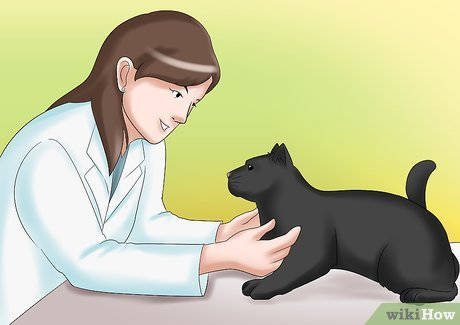
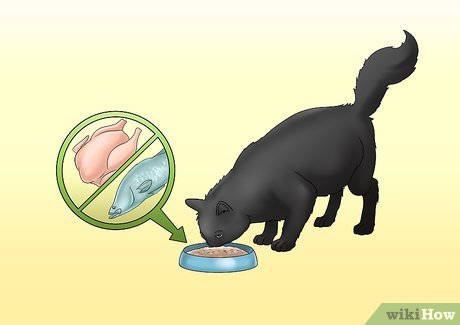
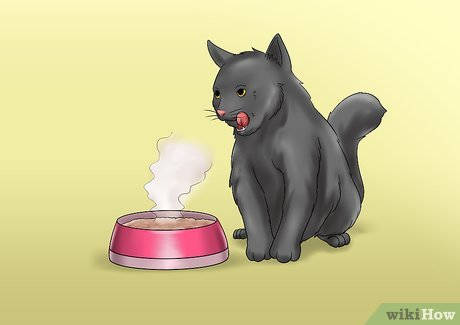
- If your cat/cat is not eating, it can lead to a form of liver failure called hepatic lipidosis, which is just as dangerous as kidney failure. Talk to your veterinarian if you think there is such a problem.
- If your cat/cat has a poor appetite (a common symptom of kidney failure), try feeding your pet by hand – many cats/cats will eat if the owner offers them food from their palms.
- On the other hand, try putting food on the cat's whiskers, so that he/she licks the whiskers and tastes the food in his/her mouth. Sometimes this technique increases the cat's/cat's desire to eat.
- You can also try heating the food in the microwave so that the food has a stronger flavor and a much more appealing temperature. Some cats/cats refuse to eat cold food, but will eat it if you heat it up.
